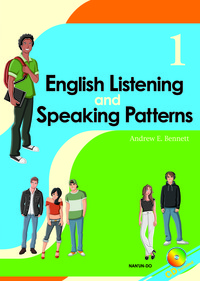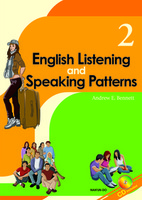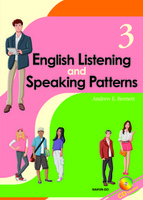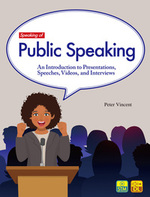English Listening and Speaking Patterns 1
| Author | Andrew E. Bennett 著 |
|---|---|
| Category |
Course Books Communication |
| Level |
Beginner |
| TOEIC Level |
300~400 |
| CEFR |
A1 |
| Release Date | 2017/04/01 |
| ISBN | 9784523178422 |
| Book Size・Number of Pages | B5・96 pages |
| Price | 2,420 yen (incl. tax) |
| Number of Units | 20 |
| Materials | Downloadable Audio Files/CD |
| Teacher’s Materials | ●Teacher's Manual(including Japanese translation) ●Teacher's Audio CD ●Teacher's CD-ROM【Teacher's Manual Data(PDF)/Text Data Part Ⅰ、Part Ⅱ、Part Ⅳ、Extra Vocabulary Sentences(Word)】 〈Others〉 Text Data (Word) |
| Stocks | 〇 |
English Listening and Speaking Patterns provides a step-by-step, integrated learning approach that builds student confidence while removing the “fear factor” from English communication. Each four-page unit covers an important everyday topic. Listening, speaking, vocabulary, and grammar skills are developed as exercises alternate between receptive and productive skill building. Above all, English Listening and Speaking Patterns puts the tools of the language into students’ hands, leading to lively classrooms and solid results.
Key Features and Functions
- 20 four-page units cover many topics of daily conversation, such as friends, movies, traveling, shopping, and culture
- Ideal for Introductory (Book 1), High-Beginning (Book 2), and Intermediate (Book 3) communication classes, with the vocabulary level, grammar difficulty, and sentence lengths carefully controlled in each book
- Various exercise types develop both receptive and productive skills
- Each unit culminates in a unique “guided discussion” that motivates students to put it all together as they provide their own ideas and input
- The accompanying CD includes audio recordings of the target vocabulary items, listening exercises, and conversation patterns
About the Series
In each book in the English Listening and Speaking Patterns series, the topics covered in all 20 units are the same. For example, “Family” is the Unit 1 topic in Books 1, 2, and 3. However, the target vocabulary, exercises, conversations, usage patterns, and discussion questions are unique in every book. On top of that, from book to book, the exercises become more complex, challenging, and thought provoking.
This series structure has a number of benefits. For a school with multiple classes at different levels, each class can use the book that’s appropriate for its students. Week to week, all the classes will be covering the same types of topics and exercises, allowing for consistency and efficiency throughout the program. Since the books are leveled, a student completing one book can seamlessly move on to the next one. What’s more, because the content is completely different in each book, students progressing through the series will explore the topics in increasingly sophisticated and engaging ways.
Usage Patterns: Talking about what we want
Unit 2 Friends
Usage Patterns: Talking about situations
Unit 3 Culture
Usage Patterns: Giving examples
Unit 4 Education
Usage Patterns: Showing empathy
Unit 5 Sports
Usage Patterns: Talking about interests
Unit 6 Work
Usage Patterns: Talking about plans
Unit 7 Food
Usage Patterns: Talking about time
Unit 8 Studying English
Usage Patterns: Talking about the truth
Unit 9 Health
Usage Patterns: Talking about how people feel
Unit 10 Clothes
Usage Patterns: Responding to circumstances
Unit 11 Traveling
Usage Patterns: Recent events and events happening soon
Unit 12 Music
Usage Patterns: Asking and telling people to wait
Unit 13 Movies
Usage Patterns: Talking about good news
Unit 14 Shopping
Usage Patterns: Softening phrases
Unit 15 Internet
Usage Patterns: Teaching and learning skills
Unit 16 Weather
Usage Patterns: Talking about future weather
Unit 17 Feelings
Usage Patterns: Understanding each other
Unit 18 Government
Usage Patterns: What everybody and nobody is doing
Unit 19 Art
Usage Patterns: Talking about art
Unit 20 The Future
Usage Patterns: Weighing sides



















